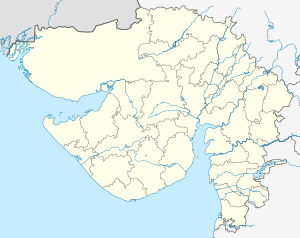Fort St. Anthony of Simbor
| Forte de Santo António de Simbor | |
|---|---|
| Bay of Simbor, Diu, India | |
| Coordinates | 20°43′03″N 70°59′43″E / 20.7174145°N 70.9954062°E |
| Site information | |
| Owner | |
| Controlled by | |
| Open to the public | Yes |
| Condition | Restrored |
| Site history | |
| Materials | Stone fort |
Fort St. Anthony of Simbor (Portuguese: Forte de Santo António de Simbor, Gujarati: પાની કોઠા), also referred as Fort of the Sea Portuguese: Forte de Santo António de Simbor or Fort of Pani-Kota, is located on a small island in the bay of Simbor, about 25 nautical miles (46 km) east of Diu in India. It was subordinate to the Portuguese Distrito de Diu and defended the supply of the boats on that stretch of the coast.
The Fort of St. Anthony of Simbor should not be confused with the Fort of the Sea Portuguese: Forte Fortim do mar or Fort of Pani-Kota, located in Diu on a small island in front of the city.
History
In the context of the independence of India the Fort was invaded in 1954, along with the Portuguese enclaves Dadra and Nagar Haveli, but the Portuguese have expelled the invaders.
On the afternoon of December 19, 1961, after the act of surrender of Diu, the second officer in command of the Portuguese army group in Diu, surrendered to the Indian troops that were occupying Indian Simbor. The army garrison of this small fort, twelve men, arrived at Diu on the morning of December 20.[1]
Characteristics
The Fort has a square form, with stone walls, inside the remains are the ruins of a Chapel, originally under the invocation of St. Anthony.
See also
References
- ^ MORAIS, Carlos Alexandre.A queda da Índia Portuguesa: crónica da invasão e do cativeiro. Editorial Intervenção, 1980. p. 242.
Bibliography
- PEREIRA, A. B. de Bragança. Etnografia da Índia Portuguesa.

